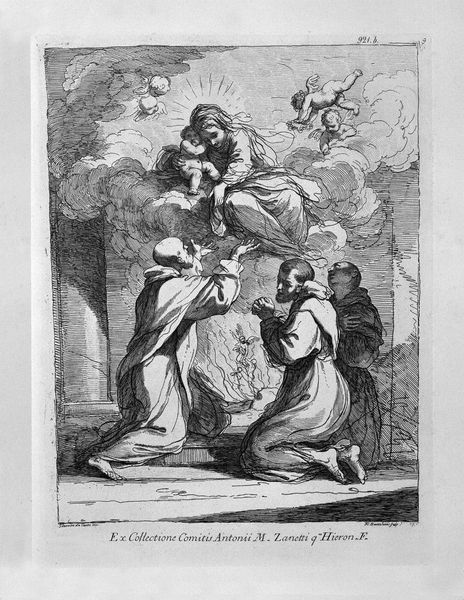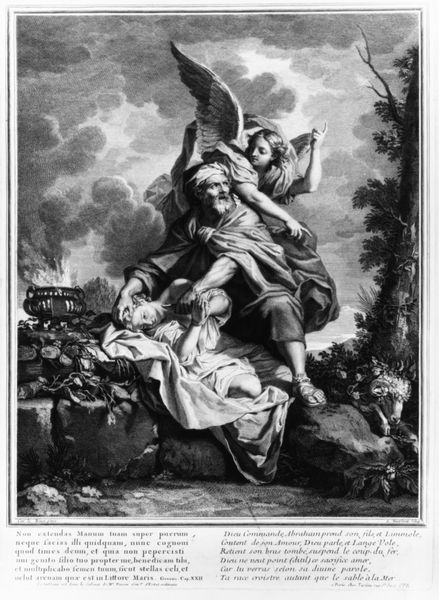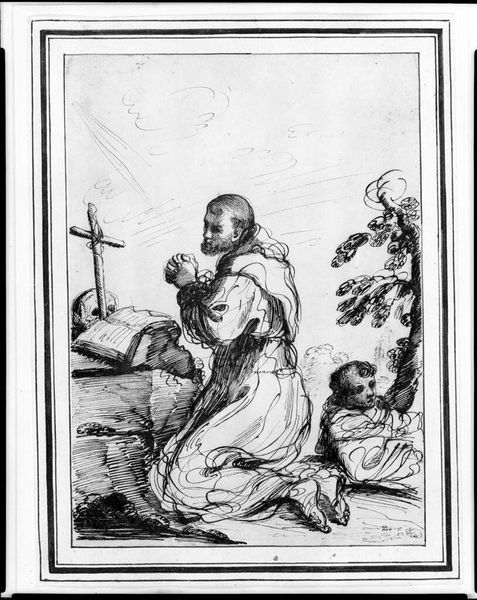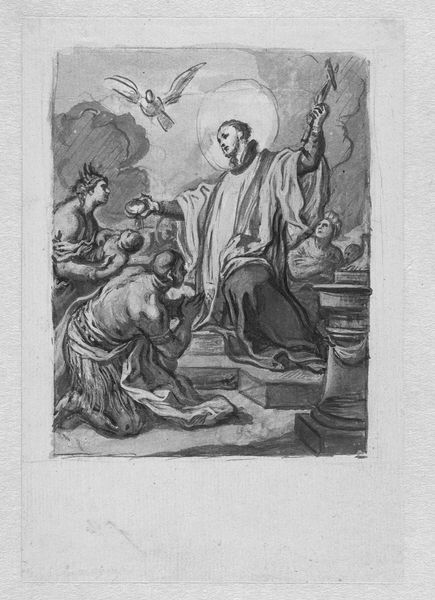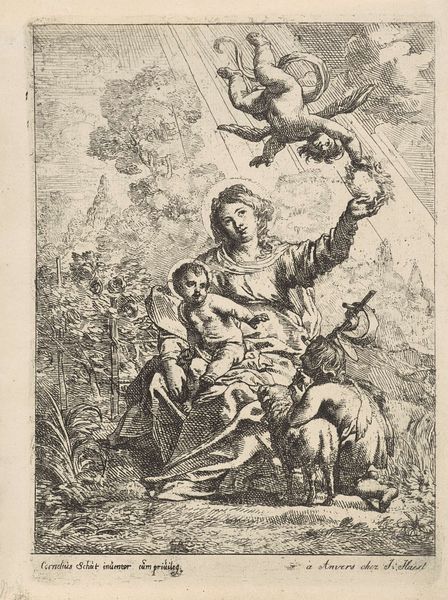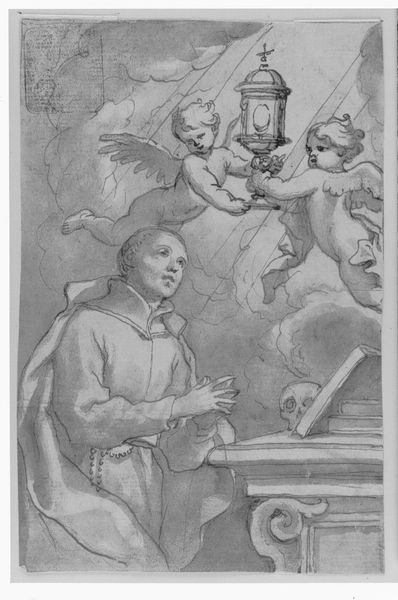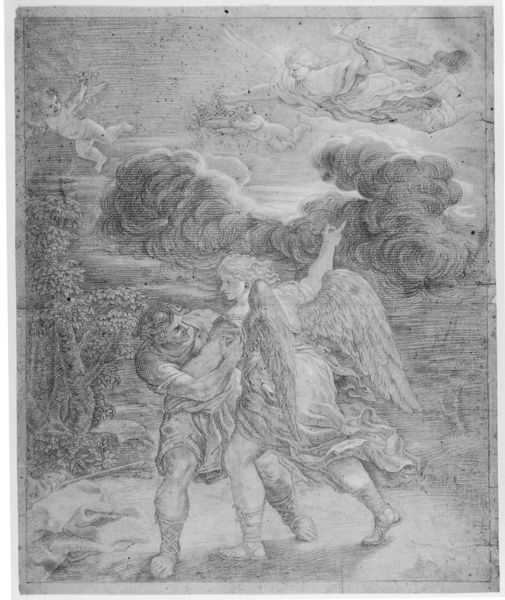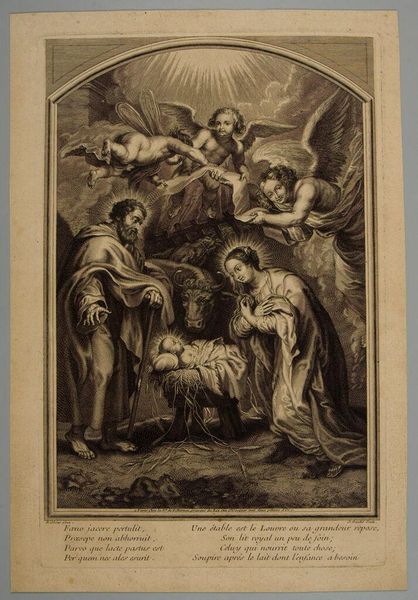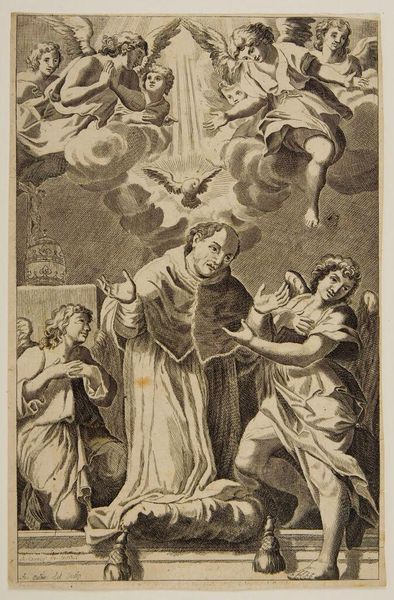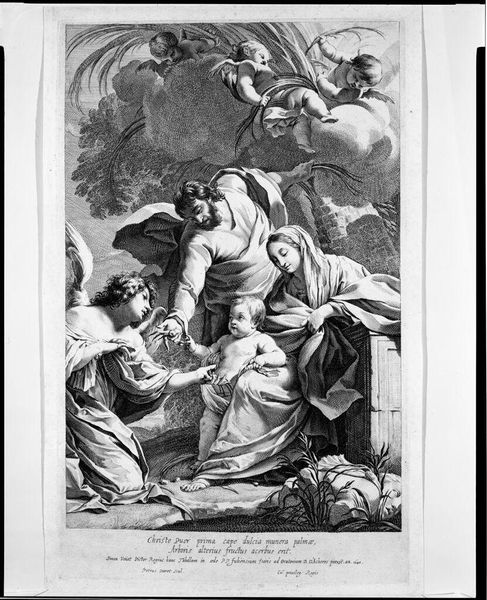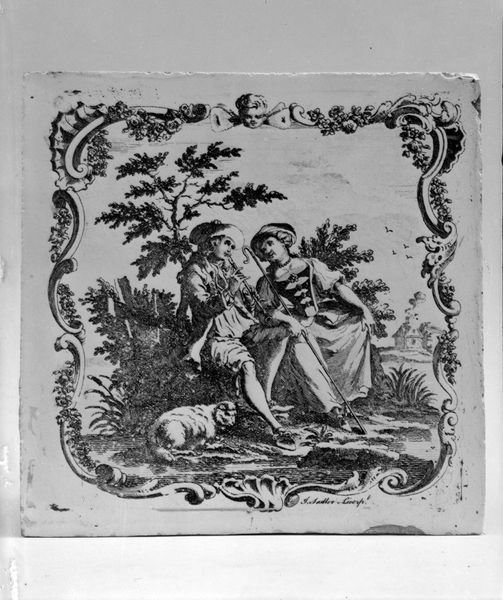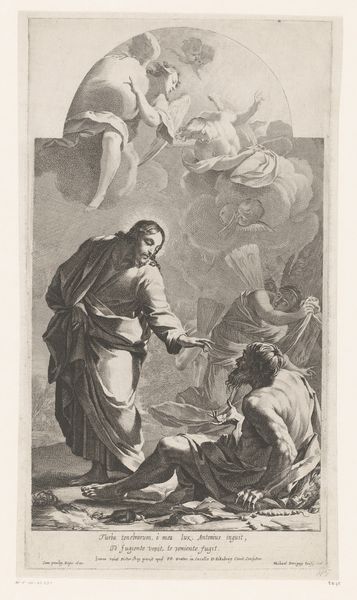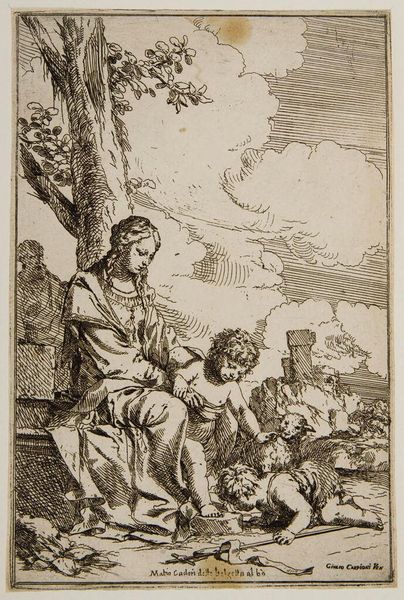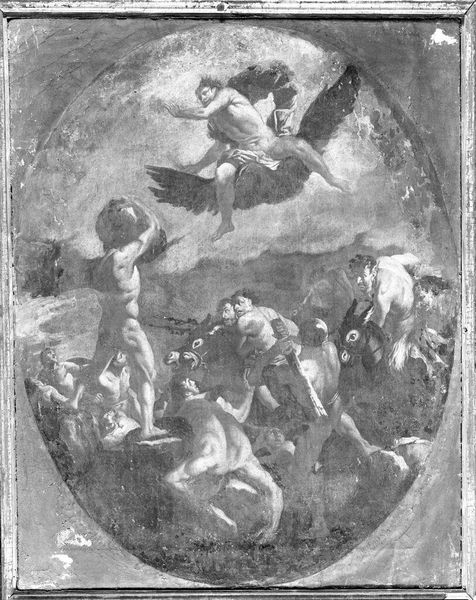
engraving
#
portrait
#
allegory
#
baroque
#
christianity
#
history-painting
#
engraving
Copyright: Public domain
Editor: This is Giovanni Battista Piranesi's engraving, "St. Francis in Prayer." There's a real sense of drama here, a kind of theatrical piety. An angel hovers above St. Francis as he kneels in prayer beside a skull, a crucifix, and an open book. The detail is incredible. What compositional elements stand out to you? Curator: Note the strong diagonal lines, Editor, particularly in the angel’s wings and St. Francis's posture, which pull our eye upward. Consider how the composition guides our eye through symbolic objects such as the skull which serves as a memento mori, that all things must pass. Editor: So, you're suggesting it's not just about religious devotion, but about reflecting on our own mortality? Curator: Precisely. And consider the open book opposite of it; could that be an expression of a potential freedom from that memento mori? And beyond these narrative considerations, examine the textures created by the hatching and cross-hatching. How does Piranesi use these lines to describe form and space? Editor: I see what you mean. The light seems to be catching the angel's wings in a way that highlights their texture. What about St. Francis's rope? How does it function compositionally? Curator: Its circular nature draws the eye back into the scene and is contrasted by the diagonal emphasis, binding the scene. Furthermore, it could also serve to denote St. Francis's piety or some element of sacrifice. But what could be the significance of this formal juxtaposition? Editor: Maybe it reflects the tension between the temporal and the eternal? It makes me consider how Piranesi can make a fairly familiar religious scene seem so striking. Curator: Precisely! It highlights his masterful skill to emphasize the value of not only devotion to technique but conceptual consideration when studying the art piece. What you see on the surface alludes to so much more!
Comments
No comments
Be the first to comment and join the conversation on the ultimate creative platform.
